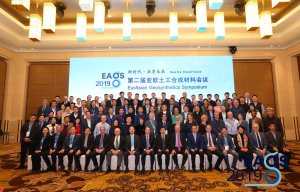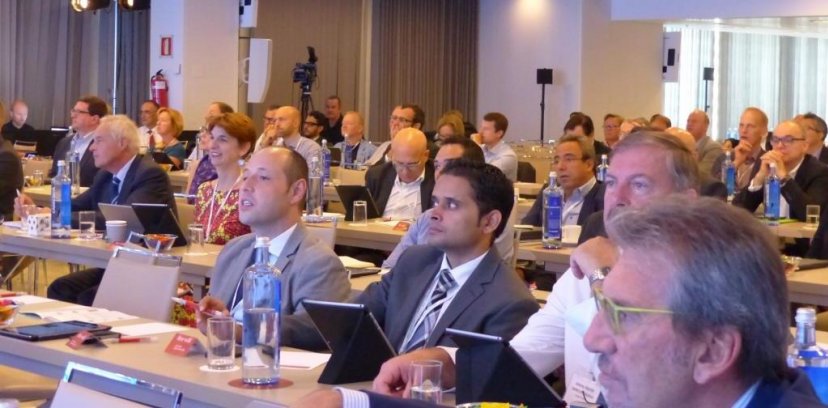
Geosynthetics help build bridges
In preparation for Outlook 2017, EDANA's General Manager caught up with guest speaker Dirk Le Roy, Managing Director of Sustenuto.

29th August 2017
Innovation in Textiles
|
Brussels
In preparation for Outlook 2017, EDANA's General Manager, Pierre Wiertz, caught up with guest speaker Dirk Le Roy, Managing Director of Sustenuto, to discuss efforts to encourage sustainable business practices and their impact on the marketplace.
Pierre Wiertz: Is sustainability a responsibility or a business opportunity? Or both?
Dirk Le Roy: The essence of sustainability in a corporate perspective is best captured by the definition put forward by the European Commission: it is about the responsibility of organisations for their impact on society. So, the basis of sustainability is responsibility, which is the reason why sustainability for companies is also called Corporate Social Responsibility (CSR).
Putting that responsibility into practice adds value, long-term value, because societal evolutions and concerns related to your sector and activities are considered. This reduces risks associated with changing markets and/or government policies.
The Commission’s PEF/OEF initiative (Product or Organisation Environment Footprint) is an example of how sustainability initiatives prepare companies for future legislation or changes in market practices. It is not only governments that play a leading role in pushing CSR.
Even though companies often look to consumers in defining their sustainability approaches, the main driver comes via B2B interactions, where customers drive sustainability objectives in the supply chain. There is also short-term value because it opens up new opportunities for products with improved sustainability characteristics. The effects are manifold and relate very much to the strengthening of trust with partners, customers and consumers.
In a world where the race for talent is increasingly part of a competitive playing field, we already see companies where building trust with employees has become the main motivation for a structured approach to sustainability. Sustainability has the capacity to influence any functional department of a company and can in this way be considered as the next layer of quality for any company.
PW: We see growth rates measured and compared ad infinitum, and business models are changing quicker than ever before. Can sustainability practices, and the standards that measure them, keep up?
DLR: The performance of sustainability is primarily measured by removing, or significantly reducing, large negative impacts induced by corporate activities or their products and services. These impacts are mostly very tangible and relate to social impacts in the company: how do we treat our employees? Social impacts outside the company include the impact on communities, consumers, partners, environment and include the ethical dimensions to trade such as anti-fraud measures.
Business models may change, but the nature of the impacts rarely changes. The real difference between companies is the type of ambition they have in minimizing their impact on society.
With the Sustainable Development Goals (SDGs), launched by the UN in 2015, this challenge grows even larger, as companies are called upon to deliver societal value, in contributing towards these SDGs, even if these are less directly linked to business activity.
PW: How can a company define success in their efforts towards sustainability?
DLR: Sustainability can be managed as professionally as we manage our businesses. Businesses have goals related to turnover, profit, added value and so on. Businesses put forward financial indicators and measure success accordingly.
Sustainability performance is likewise measured by impact indicators on different economic, environmental and social scales (examples may be found in the Global Reporting Initiative Standards). The principle is simple, but for some fields, measurement may prove to be difficult, and proxy indicators are then used to keep track on performance.
Next to these indicators, the ultimate success is the trust, support and acceptance of society of the initiatives companies undertake. That’s why stakeholder engagement is key to any sustainability initiative.
PW: As companies expand internationally, how easy is it to export sustainable business practices? What role do partnerships with NGOs play here?
DLR: The UN defined one of the Sustainable Development Goals to be partnerships. The underlying message is that any organisation cannot achieve sustainability by itself. For a start, we are linked through our value chains. Integrating corporate sustainability is evolving towards building sustainable value chains, which, over the last decade, have become global value chains.
As CSR is the voluntary responsibility we take above any legislation, and the legislative framework is very different from one continent to another (and from one country to another), exporting sustainable business practices can be a sensitive process: sustainability is integrated in global value chains with different speeds defined by sector initiatives. And the capacities of a company to absorb gaps between the legislative framework and the aspired qualities vary. We must also note the effect of attention from the public and pressure from NGOs
NGOs have distinct functions. First, they vocalize legitimate concerns of society, and if these concerns relate to significant impacts in society, NGOs are a pressure group. Other NGOs have a more cooperative approach in working together with companies who are leaders in sustainability or have sustainability ambitions with a leadership quality.
Given the fact that NGOs grow out of the societal concerns, they are vital partners in understanding what sustainability means. Their messages may sometimes be very unpleasant for the corporate world, but they convey what the impact on society may be. As sustainability efforts increase, partnerships in general and specifically with NGOs will do so as well.
PW: You’re joining us to discuss sustainability at Outlook, a conference which focuses on nonwoven personal care and hygiene products. Sustainable products cannot be produced in a vacuum. Input and support is required from stakeholders who need to agree on processes and standards. To what degree does this frustrate progress? And what could be done to improve the process?
DLR: As sustainability is largely defined by sector characteristics (because the type of activity defines the nature of the impact), it is a logical step in the growth process of sustainability that sector initiatives have emerged defining sustainability in the form of charters, labels and so on. Some of these are developed by the sector itself, the most successful ones are a joint development between stakeholders (NGOs, experts…) and the sector.
It may take time to build these charters, making common objectives and engagements explicit, but I would not regard the process as too different from other sector initiatives which are purely business related, such as ISO processes about technical quality, safety etc. The main difference is that people joining this debate have different perspectives. I would consider this a learning process in which each participating party is teacher and learner.
Stakeholders can teach companies what impacts are and what can be achieved, companies can teach how technology can be a leverage or a hindrance in obtaining these goals. To use the words of B.K.S Iyengar ‘the art of teaching is tolerance’.

Business intelligence for the fibre, textiles and apparel industries: technologies, innovations, markets, investments, trade policy, sourcing, strategy...
Find out more